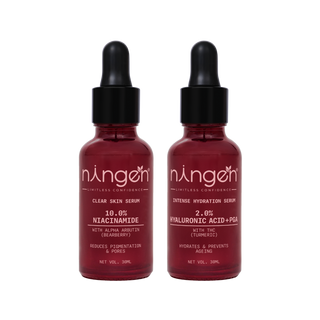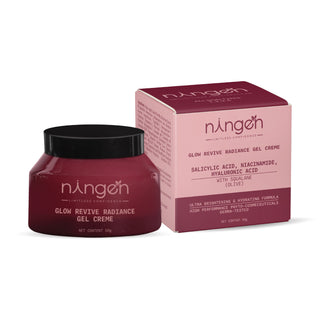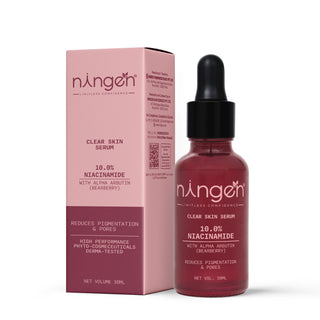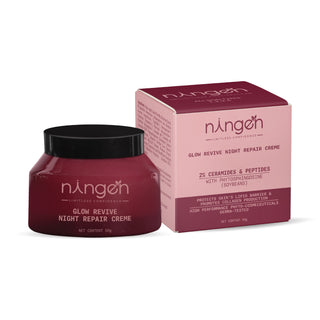If you dream of smooth, radiant skin, a high-quality face serum should be your secret weapon! Unlike moisturizers, serums are lightweight, fast-absorbing, and packed with potent active ingredients that target specific skin concerns like wrinkles, dullness, acne, and dehydration.
But with hundreds of serums on the market, how do you pick the right one? Don’t worry—we’ve got you covered! This article will guide you through how to choose the perfect serum for smooth skin.
In This Guide;
How to Choose the Perfect Face Serums for Smooth Skin?
What Is Smooth Skin? A Dermatologist’s Definition
Smooth skin is characterized by an even texture, optimal hydration, and minimal imperfections, resulting in a soft, luminous, and healthy appearance. Clinically, it reflects well-functioning skin barriers, balanced cell turnover, and proper collagen production.
Key Characteristics of Smooth Skin:
-
Even Texture
-
No rough patches, flakiness, or bumpiness
-
Refined pores with no congestion (blackheads, milia)
-
Minimal acne scars or post-inflammatory hyperpigmentation
-
Optimal Hydration & Elasticity
-
Plump, supple skin with no tightness or crepey texture
-
Strong moisture barrier function (no transepidermal water loss)
-
Bounces back when gently pressed (sign of good collagen & elastin)
-
Uniform Tone & Reflectivity
-
No dullness or excessive redness
-
Light diffuses evenly across the skin (no shadow-causing texture)
-
Balanced sebum production (not overly oily or dry)
-
Absence of Visible Aging Signs
-
Fine lines are faint (not deep wrinkles)
-
No visible sagging or loss of firmness
How to Achieve Smooth Skin? (Clinically Proven Methods)
✅ Exfoliation (AHA/BHA/PHA) – Removes dead skin cells for refined texture
✅ Hydration (Hyaluronic Acid, Ceramides) – Strengthens moisture barrier
✅ Collagen Boosters (Retinoids, Peptides, Vitamin C) – Improves elasticity
✅ Sun Protection (SPF 30+ Daily) – Prevents UV-induced texture damage
Also read: How to choose the face serums for aging skin?
How to Choose the Perfect Face Serums for Smooth Skin?
1. Know Your Skin Type: The First Step to Serum Success
Before buying a serum, identify your skin type. Using the wrong serum can lead to breakouts, irritation, or dryness.
Skin Types & Best Serums for Each
-
Dry Skin → Look for hyaluronic acid, glycerin, squalane, or ceramides.
-
Oily/Acne-Prone Skin → Try niacinamide, salicylic acid, or tea tree oil
-
Combination Skin → Go for balancing ingredients like vitamin C, hyaluronic acid or peptides
-
Sensitive Skin → Opt for calming ingredients like aloe vera, chamomile, or centella asiatica
-
Aging/Mature Skin → Choose retinol, peptides, or bakuchiol
2. Identify Your Skin Concerns: What’s Your Serum Goal?
Serums are problem-solvers. Pick one based on your top skin concerns:
For Wrinkles & Fine Lines
Best Ingredients: Retinol, peptides, vitamin C
For Dull, Uneven Skin Tone
Best Ingredients: Vitamin C, alpha arbutin, glycolic acid
For Acne & Breakouts
Best Ingredients: Salicylic acid, niacinamide, tea tree oil
For Dry, Dehydrated Skin
Best Ingredients: Hyaluronic acid, glycerin, squalane
For Redness & Irritation
Best Ingredients: Centella asiatica, green tea, aloe vera
3. Check the Ingredient List: What to Look For (And Avoid!)
Not all serums are created equal. Some ingredients work magic, while others can cause irritation.
Powerhouse Ingredients to Look For
-
Hyaluronic Acid → Deep hydration & plumping
-
Vitamin C → Brightens & fights free radicals
-
Niacinamide → Reduces pores & controls oil
-
Retinol → Anti-aging & collagen booster
-
Peptides → Firms skin & reduces wrinkles

4. Layer Correctly: How to Apply Serum for Maximum Results
Even the best serum won’t work if applied incorrectly! Follow this step-by-step routine:
-
Cleanse → Remove dirt & makeup
-
Tone → Prep skin for better absorption
-
Apply Serum → 2-3 drops, gently press into skin
-
Moisturize → Lock in hydration
-
Sunscreen (AM only) → Protect from UV damage
5. Evaluating Serum Texture & Absorption for Optimal Results
The right serum texture and absorption rate are critical for maximizing skincare benefits. Serums' lightweight formulations allow deeper penetration of active ingredients compared to creams.
Texture Guide:
Watery Serums - Best for oily/acne-prone skin; fast absorption, zero greasiness
Gel Serums - Ideal for combination skin; balanced hydration
Cream Serums - Perfect for dry/sensitive skin; nourishes while protecting barrier
6. Importance of Concentration Levels in Serums
When choosing face serums for smooth skin, understanding the concentration levels of active ingredients is crucial. Concentration levels determine a serum's potency and effectiveness in addressing specific skin concerns. High concentrations can yield significant results, yet they require careful consideration to avoid irritation, especially for sensitive skin.
Absorption Insights:
Fast-Absorbing - Layer easily under moisturizers/sunscreen
Slow-Absorbing - Gentle delivery for potent actives (retinol/vitamin C)
Pro Tip: After application, skin should feel nourished - never sticky or tight. Proper texture selection enhances product efficacy for smoother, healthier-looking skin
7. Patch Test Before Full Use: Avoid Skin Disasters!
Even the gentlest serums can cause allergic reactions. Always patch test:
Apply a small amount behind your ear or on your wrist
Wait 24-48 hours
If no redness/itching occurs, it’s safe to use!
8. Expiration & Storage Guide
Check expiration dates to ensure safety and effectiveness. Expired products may lose potency or become harmful.
Storage Tips:
-
Store most items in cool, dry places
-
Refrigerate perishables & sensitive products
-
Keep light-sensitive items (e.g., serums) away from sunlight
Proper storage extends product life and maintains quality.
9. Monitor Skin’s Reaction to New Serums
When introducing new face serums to your skincare routine, it's essential to monitor your skin's reaction carefully. Start by performing a patch test on a small area of your skin, ideally on your inner forearm, to check for any allergic reactions. Wait 24-48 hours to ensure no irritation occurs.
Here is a quick checklist for monitoring your skin's reaction:
-
Patch Test: Test on a small area first.
-
Slow Introduction: Use the serum sparingly in the beginning.
-
Observe: Look for irritation or improvements.
-
Document Changes: Note any reactions or benefits.
-
Adjust Frequency: Based on your skin’s tolerance.
Also read: The best methods of serum application.
The Bottom Line
Choosing the perfect face serum is all about understanding your skin type, concerns, and the right active ingredients. With the right serum—whether it’s hydrating hyaluronic acid, brightening vitamin C, or anti-aging retinol—you’re one step closer to achieving that smooth, glowing complexion.
Stay consistent, listen to your skin, and watch your glow transform! Ready to find your perfect match? Your smoothest skin yet awaits.
Loved this guide? Share it with a friend who needs a serum upgrade!
TLDR;
To choose the perfect face serum for smooth skin, first identify your skin type (dry, oily, sensitive, etc.) and target specific concerns like wrinkles, dullness, or acne with key ingredients—hyaluronic acid for hydration, vitamin C for brightening, or retinol for anti-aging. Always check the ingredient list for irritants and opt for the right texture (lightweight for oily skin, richer for dry). Apply correctly by layering after cleansing and toning, and don’t forget sunscreen. Patch test new serums, introduce them gradually, and monitor your skin’s reaction. Proper storage (cool, dark places) and checking expiration dates ensure maximum effectiveness. Consistency and the right serum will get you that radiant, smooth complexion!
Frequently Asked Questions
Q1: How do I know which serum is best for my skin type?
Match your skin type to key ingredients - hyaluronic acid for dryness, niacinamide for oiliness, centella asiatica for sensitivity. Always patch test first.
Q2: Can I use multiple serums together?
Yes! Layer from thinnest to thickest texture, but avoid mixing retinol with vitamin C or AHAs/BHAs to prevent irritation.
Q3 How long until I see results from a new serum?
Most serums show effects in 4-6 weeks, though hydration serums work faster (1-2 weeks) while anti-aging takes 8-12 weeks.
Q4: Should I use different serums for day and night?
Ideal for maximizing benefits - vitamin C in AM (antioxidant protection), retinol in PM (cell renewal). Always follow with SPF in daytime.
Q5: Why does my serum pill/flake on application?
This occurs when formulas with silicones or thick polymers are layered incorrectly. Apply to damp skin and wait 1 minute between layers.
Q6: Can serums replace my moisturizer?
No - serums treat specific concerns while moisturizers seal in hydration. Always follow serum application with moisturizer.
Q7: How should I store serums to maintain potency?
Keep in cool, dark places (not bathroom cabinets). Refrigerate vitamin C and peptide serums - discard if color changes or odor develops.












